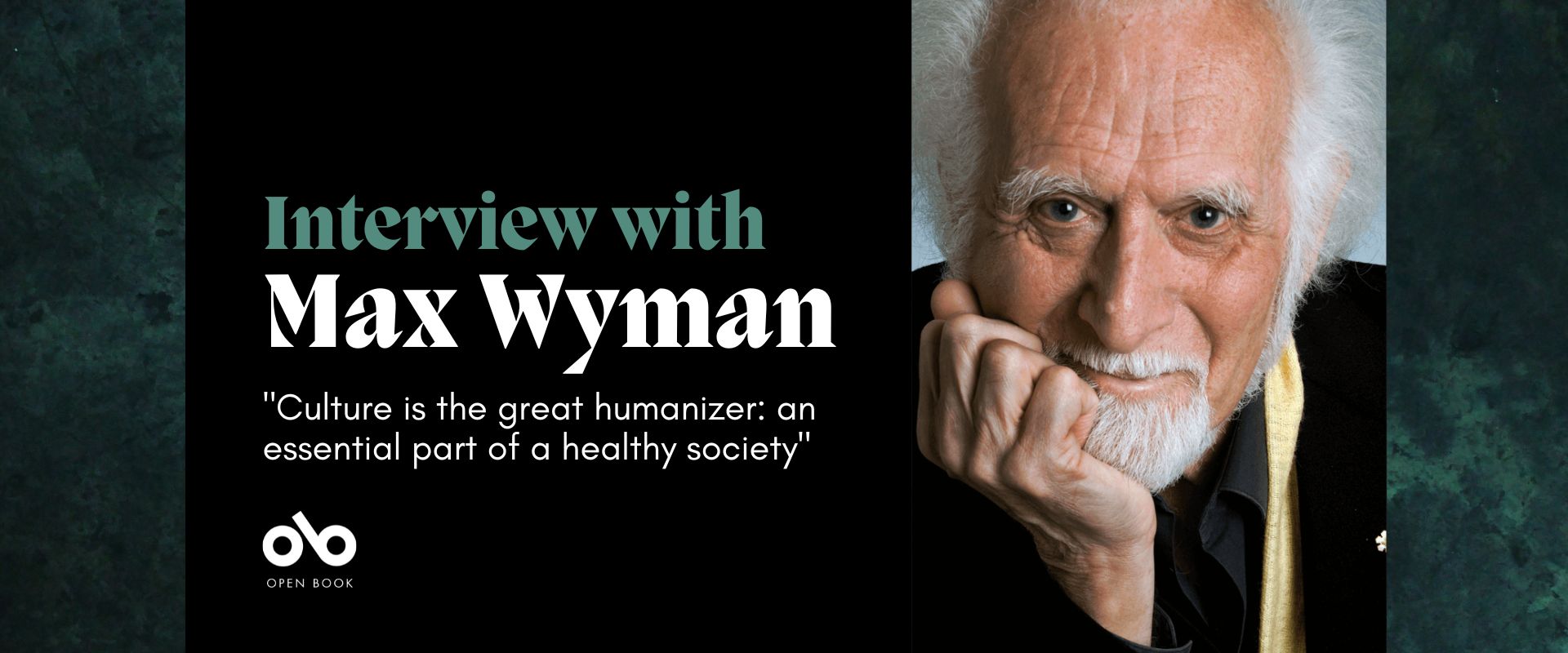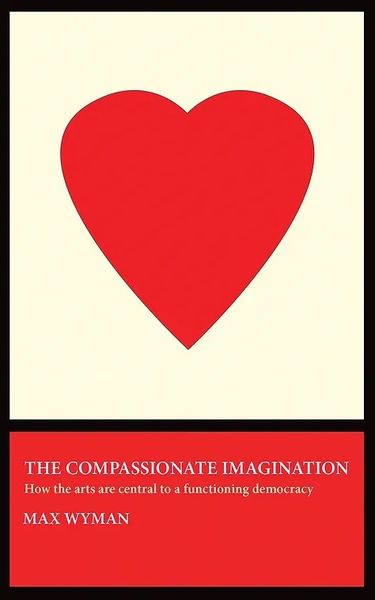"We Neglect the Arts and Stress the Sciences at Our Peril" Max Wyman on Why Arts Education is Both Beneficial & Necessary
When education is viewed as simply a pipeline to creating a skilled labour force, governments often find excuses to hack and slash at anything that could be considered a "frill", including (or at times, especially) the arts. But BC-based cultural commentator Max Wyman posits that education in the arts can complement S.T.E.M. based learning—and vice versa—fostering learners that are not only more fulfilled, but more creative, innovative, and flexible.
Wyman has spent nearly five decades observing the arts in Canada and Canadian education, earning recognition as an Officer of the Order of Canada and a former member of the board of the Canada Council for the Arts. His new book, The Compassionate Imagination: How the Arts Are Central to a Functioning Democracy (Cormorant Books) is his most urgent and inspiring yet, offering a newly reimagined path to integrating the arts into the education system, and by extension, honouring their value both on a human level and in a market economy.
Imagining a world where S.T.E.M. becomes S.T.E.A.M., Wyman bypasses the combative idea of arts vs. science and instead presents a world that acknowledges the value of fostering learning in all avenues to create the most robust social democracy possible. We're speaking with him about the book and his experiences today as part of our True Story nonfiction interview series.
He tells us about the unique value of interacting with the arts "in an increasingly chaotic and morally compromised world", discusses why the value of art must be measured in metrics beyond profit and loss, and shares thought-provoking insights on writing nonfiction in an age of disinformation, and
Open Book:
Tell us about your new book and how it came to be. What made you passionate about the subject matter you're exploring?
Max Wyman:
I’ve had the good fortune to spend much of my life being paid to write about the products of other people’s creativity: all the experiences that we sum up under the portmanteau term “art and culture”—music, books, theatre, art, dance, film, and so on. And while I wouldn’t be prepared to go the full Tolstoy—he said the highest purpose of art is to make people good by choice—I know the experience has made me a better person than I might otherwise have become. Interaction with the creative expression of others helps us understand each other better, empathize with each other more—offers us a chance to find meaning and connection and understanding in an increasingly chaotic and morally compromised world. You’re more prepared to take people on their own terms.
It’s not something you have to work at, like exercise: it just happens. Watch a play, read a book, wander round an art gallery: you come away changed, even if it’s in the slightest of ways. You’ve seen a fragment of the world, or of a life, through someone else’s eyes. Culture is the great humanizer: an essential part of a healthy society.
But it has always been short-changed by our governments, treated as a frill, something to be fobbed off with the scraps after everything else it taken care of. The Compassionate Imagination lays out a framework of change, a new cultural contract for Canada, that puts art and culture at the heart of our lives together.
OB:
Is there a question that is central to your book? And if so, is it the same question you were thinking about when you started writing or did it change during the writing process?
MW:
Why does art and culture always have to justify itself in economic terms—its measurable value to society? We live in a society in which we value everything in terms of what it can contribute to the economy. But you can’t show the value of art on a cost-benefit graph. The same demand for measurability explains why our schools have shifted their focus away from the humanities: you teach the test. We need the STEM syllabus, but there is more to the fulfilled and well-lived life than STEM will give you. We neglect the arts and stress the sciences at our peril.
Your CanLit News
Subscribe to Open Book’s newsletter to get local book events, literary content, writing tips, and more in your inbox
My book asks a series of questions that have come into focus for me over five decades of writing about the arts in Canada: What if we returned the arts to a central position in our education systems, affirming the role of the arts and humanities alongside the sciences: STEAM rather than STEM? What if we were to liberate the collaborative imagination by giving Canada’s diverse creative community a place at the decision-making table as we seek solutions to the stark challenges of our time? What if we were to integrate Indigenous ways of knowing and creating into our decision-making and funding processes? What if we were to design new ways to empower all Canadians to enjoy and explore the richness of our cultural expression?
OB:
What do you love about writing nonfiction? What are some of the strengths of the genre, in your opinion?
MW:
I’ve spent my life writing for print publications, newspapers and magazines, as well as publishing seven nonfiction books, so I’m addicted to the legwork—the interviewing and the digging and the scouring and the scraping. The Internet has radically changed the way it’s done, but the rules are the same: stay curious, take nothing on trust, verify everything, know when to back out of the rabbit-hole. For me, a project is a living thing; I’ll have an overview of the shape it’s going to take, but it will usually come together in bits and pieces, the way film scenes are shot, not necessarily in the order in which they will appear. And then there’s the joy of editing and shaping and crafting and unifying all that material, and incorporating new discoveries as you go along (it can be a very fluid process, and a lot of what you thought was good stuff can find itself abandoned along the way)… and always, always, there’s the private pleasure of bringing it together in words that are your own, words that you try (and sometimes fail, so you try again) to make the best they can be.
OB:
What does the term creative nonfiction mean to you?
MW:
Frankly, not a lot. I understand what it is trying to say, but it seems to do nothing but split hairs: all nonfiction is creative, surely (unless it has been put together by your ever-obliging AI assistant) because it is a product of the creative human mind. People who write history and biography (and I’ve done my share of both) are usually as much constructors as chroniclers. History happens in shadow as much as sunlight, and shifts its shape according to the needs and fancies of those who supply the narrative. Detached, real-time, fully detailed story-telling is impractical, so what is written (and written about) becomes a selective decision by the writer. Our interpretation of the world is partial at best, and by no means settled or static. So we embroider it, add colour, juice it up: all non-fiction is one individual’s manufactured (“creative”) version of what went on or who the subject was, and it’s inevitably incomplete and imperfect, however well-intentioned, however deeply researched.
What’s more interesting in this debate is what Neil Gaiman calls “the lie that tells the truth”—the old notion that, in a work of art, the absolute truth is not necessarily the best way to find the essence of a person or a situation. That applies more to fiction than nonfiction, perhaps, but writers of nonfiction often use the same tools—dialogue, conflicting points of view, narrative—to get to the heart of their subjects.
Modern mass and social media only complicate things. The Internet presents all information at equal value, though we know it’s not. Documentary history, classroom history, historian history—has never been so suspect or so compromised. Bombarded by this mediated truth, we find ourselves in a climate of ambiguity and doubt, and the record of the past loses credibility and cultural currency. No wonder conspiracy theory is such a thriving business on the Internet.
The best you can do is to pay attention—and, in the case of writers of nonfiction, do what you can to reinforce public understanding of the truth: which is, in Salman Rushdie’s words, to “resist the erosion in the public acceptance of ‘basic facts,’ scientific facts, evidence-supported facts... [and] combat the political demagoguery that seeks to do what authoritarians have always wanted—to undermine the public’s belief in evidence, and to say to their electorates, in effect, ‘Believe nothing except me, for I am the truth’?”
This all becomes blurred, though, in the least trustworthy form of nonfiction, autobiography. Technology allows us—encourages us, obliges us, you might even say—to photoshop and fabricate and spin at will. We remanufacture the minutiae of our lives. That throws even more of a moral responsibility onto the principal source of autobiography, memory, and memory has its own problems. Eight billion versions of life experience walk the planet, and all of them are different. Spend time in any courtroom to observe how perception colours recollection. The Rashomon principle: any experience, any event, can have as many remembered versions as it has participants.
That’s where the “creative” bit comes into play. You take the materials that have come to hand, and you fondle them and caress them and hold them up to see how they refract the light, and eventually you shape them into something you think—hope—someone else might be entertained or moved or persuaded or scandalized by, something that reflects the truth as you understand it (or want it understood), and then you send it out for all the world to see. Creative nonfiction, you might call it, if you need a label or a shield. But really, it’s just you, in all your hopes and flaws and striving.
OB:
What are you working on now?
MW:
Like everyone else of my generation, I’m well embarked on that never-ending expedition into the half-remembered, half-imagined past that is the memoir—350,000 words and counting, every one of course a precious gem: memoir, a genre that fits the term creativenon-fiction if anything does … I make sporadic side-ventures into play-writing (a few have had public readings: I love the sense of boundary-breaking when you write plays—none of the ordinary writing rules apply—and you also get to handle big ideas in human-scale terms) … and of course, like everyone else of my generation, I have a couple of novels on the boil: nothing I’d want to show anyone, but they (and the plays) are pleasant indulgences when the busy slog of mediating truth becomes too much.
_____________________________________________________
Max Wyman is one of Canada’s foremost cultural commentators. For more than three decades he wrote arts criticism and analysis for Vancouver newspapers and CBC radio. The Compassionate Imagination is his seventh book on the arts in Canada. He is an Officer of the Order of Canada, a former member of the board of the Canada Council for the Arts, and a former President of the Canadian Commission for UNESCO. He lives in Lions Bay, near Vancouver, BC.





